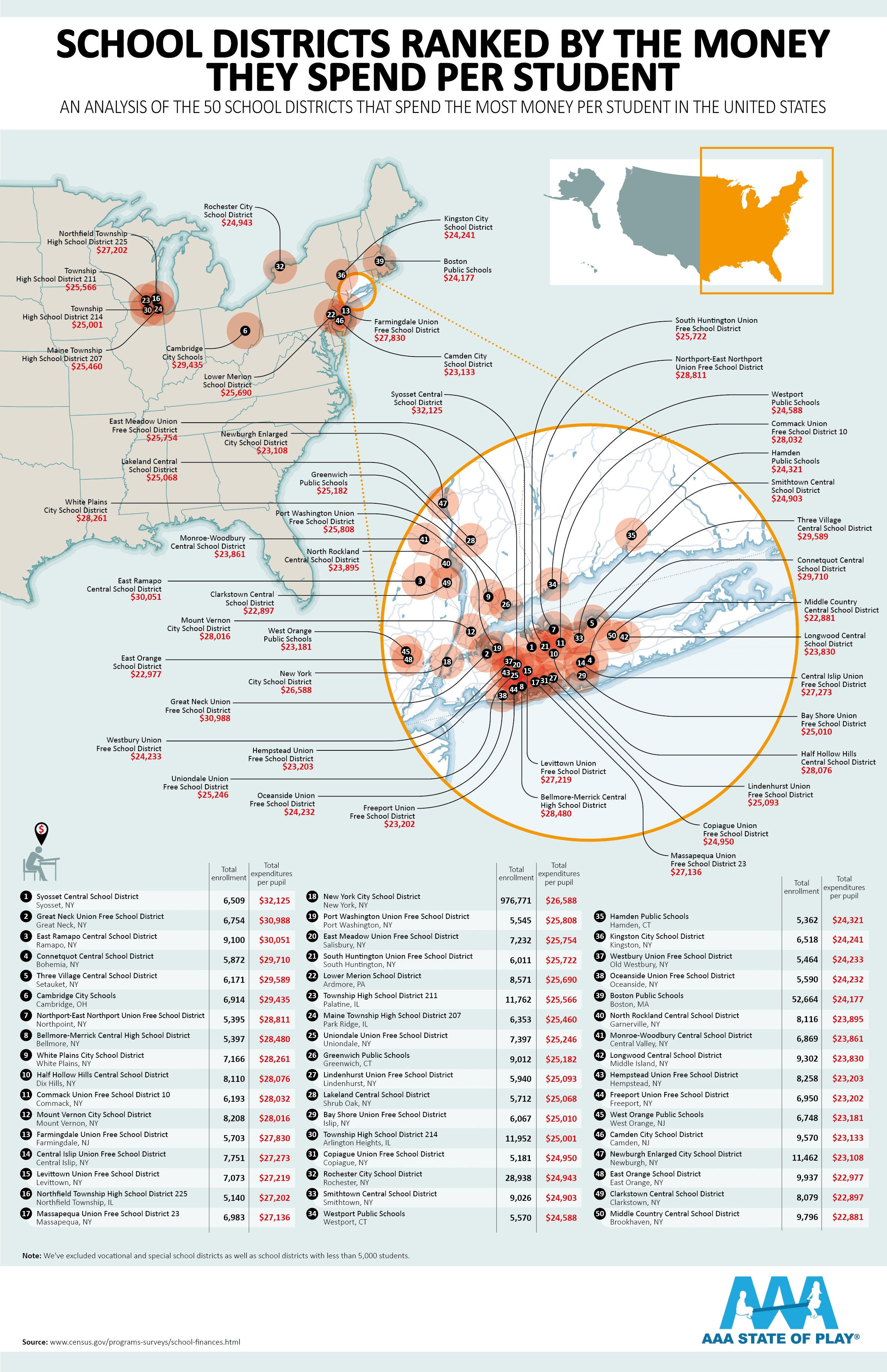School Districts Ranked by the Money They Spend Per Student
More focus has been put on public school funding as the education gap between areas of the country that are more affluent than others continues to grow. School districts that are well-funded are able to offer far more opportunities for their students to succeed. But how are public schools funded? Public schools are funded by federal, state, and local resources, but nearly half of the school funding is from property taxes, so wealthier areas with more expensive homes will have more money to put into their local public schools for programs, supplies, technology, playgrounds, and more.
How much does public school cost per student? In the more affluent areas of the country, the answer may surprise you. Using the most recent data collected by the Census Bureau in an annual survey of school system finances, we found the 50 school districts in the country with the highest total expenditures per pupil in 2018. For this analysis, we only compared school districts that had 5,000 students or more, and we excluded any vocational and special schools. We found that one area of the country dominated the list, with 38 of the 50 counties coming from just one state: Any guesses as to which state it was?
Click on the image to view the full-size image
Embed this image on your site:
Which School District Spends the Most Money per Student?
The school district that spent the most money on its students was Syosset Central School District in Syosset, New York, which was found to spend $32,125 per pupil. With a total enrollment of 6,509 students, the school’s total expenditures on its students amounted to an incredible $209.1 million during the 2018 school year.
Out of the 50 school districts that found themselves at the top of the list for the highest expenditures per pupil, 38 school districts were in the state of New York. The top 50 school districts were found to spend between $22,881 and $32,125 per pupil, which amounts to massive education budgets when each district has more than 5,000 pupils to account for.
The 10 School Districts That Spend the Most per Student
- Syosset Central School District, Syosset, NY: $32,125
- Great Neck Union Free School District, Great Neck, NY: $30,988
- East Ramapo Central School District, Ramapo, NY: $30,051
- Connetquot Central School District, Bohemia, NY: $29,710
- Three Village Central School District, Setauket, NY: $29,589
- Cambridge City Schools, Cambridge, OH: $29,435
- Northport-East Northport Union Free School District, Northport, NY: $28,811
- Bellmore-Merrick Central High School District, Bellmore, NY: $28,480
- White Plains City School District, White Plains, NY: $28,261
- Half Hollow Hills Central School District, Dix Hills, NY: $28,076
How Much Does the U.S. Spend on Education?
We looked into how schools are funded, but how much is being spent in federal funding for schools?The federal government provides roughly $79 billion each year for primary and secondary education programs, but this funding is discretionary, which means the amount is set annually by Congress. The amount of funding the federal government contributes to each state varies, with some states receiving less than 5% of their total from the federal government while others receive more than 16% from them.
Find more about the author: Kim Hart


